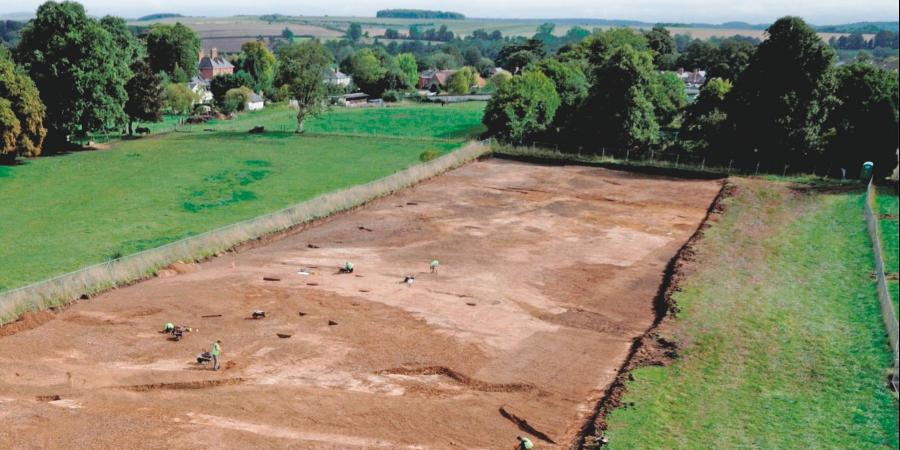Neolithic, Iron Age and Romano-British Activity at the Former MOD Headquarters, Durrington Wiltshire,
By Steve Thompson and Andrew B. Powell,
In 2010−12 the excavation at the Former MOD Headquarters at Durrington, funded by Persimmon Homes Ltd, came to a close. Results of post-excavation analysis and further research on the findings is now available to read in our latest book. The main phases of activity date from the Neolithic to post-Roman period, the site offers a series of tantalising clues as to the activities around modern Durrington and just to the north of the great henge earthwork of Durrington Walls, and the wider Stonehenge Landscape.
Focusing on the excavations, it provides period by period analysis of the site, highlighting key finds, as well as key features and placing the site in its wider setting.
The earliest evidence is an Allerød soil (formed during the Last Glacial Maximum over 10,000 years ago) found in the side of a massive Late Iron Age ditch. No archaeological finds relating to this soil were recovered.
From Neolithic post alignments, through to Iron Age defensive earthworks, to a Roman settlement and metalled trackway, the book explores the shifting pattern of different layers of occupation over a period of 4500 years.
Some of the key features explored are the solution hollows, found arcing across the landscape, and a focus for human activity. Particularly fascinating are the flint scatters around the largest hollow, indicative of possible ritual activity. A smaller hollow had a cremation burial placed within it. The same area was later marked with oak post settings and Grooved Ware pits at about 2500 BC.
The same area was cut through by a massive Iron Age earthwork possibly built as a valley enclosure or ‘fort’ just before the Roman Invasion of 43 AD. These strands of evidence or ‘prehistoric lines’ present insights into the changing world of the local population, and how they influenced and altered the landscape over a period of 4500 years.
Amongst all the finds illustrated in the book, there are several key artefacts which present interesting challenges and questions. These enigmatic objects include the ‘bluestone’ bifacial stone object, made from igneous rock probably from Wales (the same stone as Stonehenge), which could have come from the time of the stone circle’s use or deposited in Romano-British times as a curio. Other finds include Roman ceramic discs found in possible middens, which could have a number of uses, some more pleasant than others.
Along Prehistoric Lines is available from Oxbow Books.
To find out more about this project or to purchase the book follow this link.
By Finn Cresswell, placement student University of Southampton
